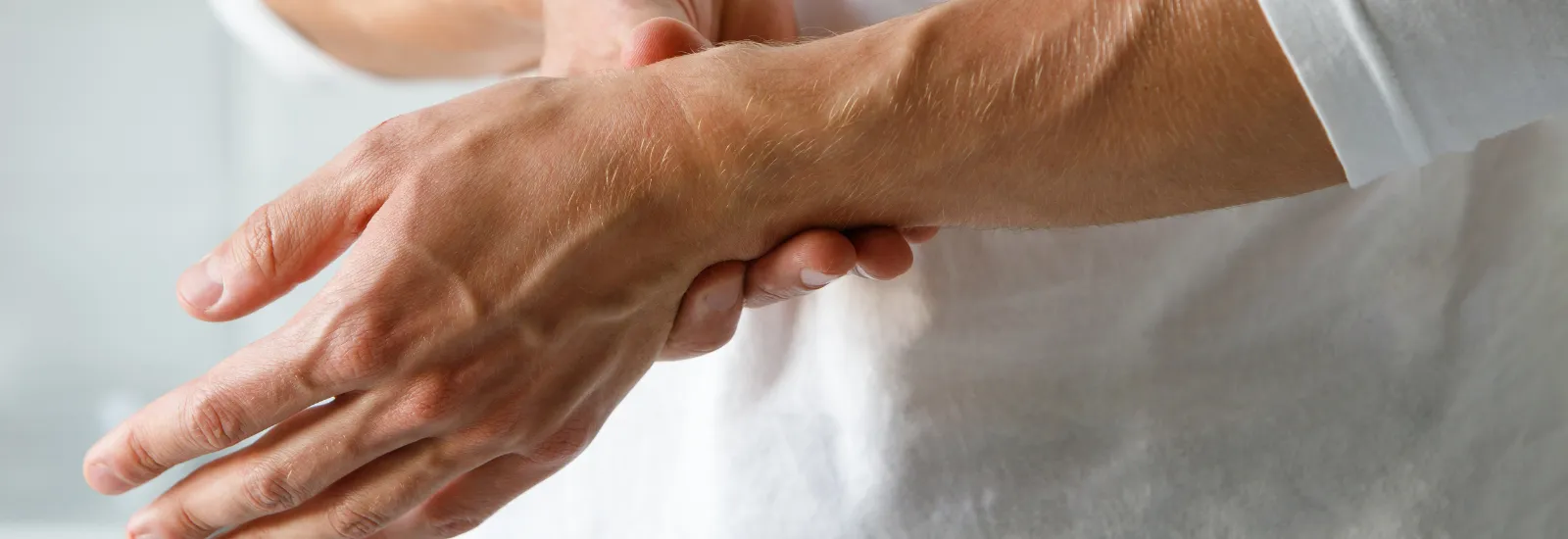
10 tips for managing rheumatoid arthritis pain
If you've been diagnosed with
arthritis, you aren't alone. The Centers for Disease Control and Prevention
estimates 1 in 4 American adults has some type of arthritis, such as
osteoarthritis, rheumatoid arthritis, or psoriatic arthritis.
Dealing with the discomfort can be
challenging both physically and mentally. But there are steps you can take to find some relief.
Understanding arthritis symptoms
Arthritis is a medical condition that affects
your joints, causing inflammation and discomfort. There are a few different
types, and all can cause joint-related symptoms that may include pain,
stiffness, redness, swelling, tenderness, and warmth around the affected
joint(s). These symptoms range in severity and can disrupt a person's daily
life.
People who have rheumatoid arthritis, an autoimmune disease that
attacks the immune system, may experience additional symptoms. Rheumatoid
arthritis typically impacts multiple joints and parts of the body at one time.
It may also cause weight loss, fever, extreme fatigue, and weakness.
Steps you can take to manage arthritis
If you're dealing with arthritis,
there are ways to find relief. Try incorporating some — or all — of these tips
into your daily life:
1. Move your body.
Although exercise may be the last
thing on your mind when you're experiencing arthritis pain, it can help. Moving
your body can decrease stiffness in your joints and improve your range of
motion.
Experts recommend getting at least
150 minutes of moderate physical activity each week. That may seem like a lot,
but it breaks down to about 22 minutes of movement each day. Choose low-impact activities, such as walking, swimming, or water
aerobics, to get your body moving without putting too much pressure on your
joints.
2. Get to a healthy weight.
Being overweight or obese is both a risk
factor for developing arthritis and a contributing factor for arthritis pain.
Losing a few pounds can help put less pressure on your joints, which can reduce
discomfort. A healthy weight is different for everyone. Talk with your provider
about a good target weight for you.
3. Watch your posture.
Whether you're dealing with arthritis
in the hands or arthritis in the knee, focusing attention on your posture may
help. Think about how you normally sit and stand each day. When you're sitting
at a desk, for example, do you lean forward and hunch? Or are you seated with
your feet planted firmly on the floor in front of you with your computer screen
at eye-level?
Sitting and standing with correct
posture can take pressure off your joints, which can alleviate discomfort. If
you aren't sure what correct posture looks like, consider working with a physical
therapist to develop
good habits.
4. Quit smoking.
What does smoking have to do with
arthritis? A lot. Smoking can harm the bones, joints, and connective tissues, and
it's a known contributor to rheumatoid arthritis complications.
In a study of women with rheumatoid
arthritis, those who currently or previously smoked had more severe symptoms
and joint damage than women who never smoked. If you smoke, talk with a
provider about a cessation strategy.
5. Find a healthy balance between movement and rest.
You've heard about work-life balance,
but when you're dealing with arthritis, you also need to find a good balance
between activity and rest. Aim to be physically active every day but pay
careful attention to your body.
If you feel like you're pushing your
limits too much, pause and rest.
6. Take medications as prescribed.
Treating arthritis may include oral and
topical medications, such as anti-inflammatories and pain relievers, to
alleviate discomfort. For people who have rheumatoid or psoriatic arthritis, a
provider may also recommend a type of medication known as a biologic, which
works on your body's immune system response.
7. Make time for relaxing activities.
While arthritis causes a range of
potential physical symptoms, it can also impact you mentally and emotionally.
To help alleviate the stress associated with arthritis, find strategies to help
yourself relax. Strategies may include meditation
and yoga, but it may also include taking up
hobbies like sewing or even birdwatching. Find something that brings you joy.
8. Try applying heat or cold.
There's a debate over whether it's
better to ice an injury or apply heat to it, but not when it comes to joint
pain. Both heat and cold have a place in providing relief. Try briefly applying
heat using a heating pad or a hot bath to help temporarily relieve pain. Use
cold, like ice packs, when you've been physically active and feel sore as a
result.
9. Be strategic about what you eat.
Consider what you're eating. Fill
your plate with foods known to fight inflammation. The Arthritis Foundation
recommends increasing your intake of soy, extra-virgin olive oil, cherries,
low-fat dairy, broccoli, green tea, citrus fruits, whole grains, beans, garlic,
and omega-3-rich fatty fish, such as salmon and tuna. Most of those foods are
particularly effective for those who have rheumatoid arthritis.
10. Find emotional outlets.
Arthritis is tough on the body, but it's also tough on the mind. Surround yourself with people you feel comfortable with. Your support team will probably include friends and family, but you may also find talking with a therapist helpful. Ultimately, easing your mind can also help ease the pain in your body.
Is the pain of arthritis getting to
be too much? The specialists and medical team at Reid Health Comprehensive Bone & Joint
Center have
solutions to help.

